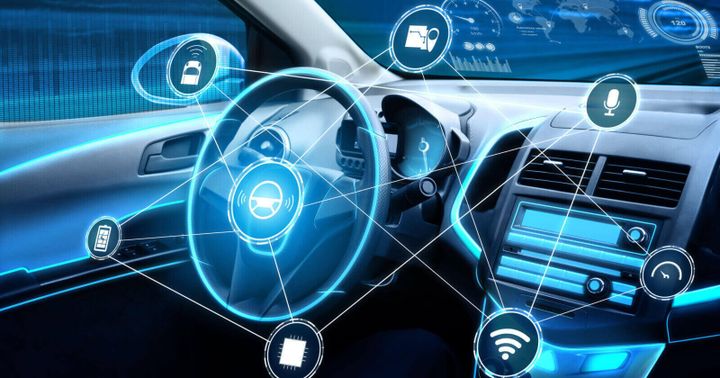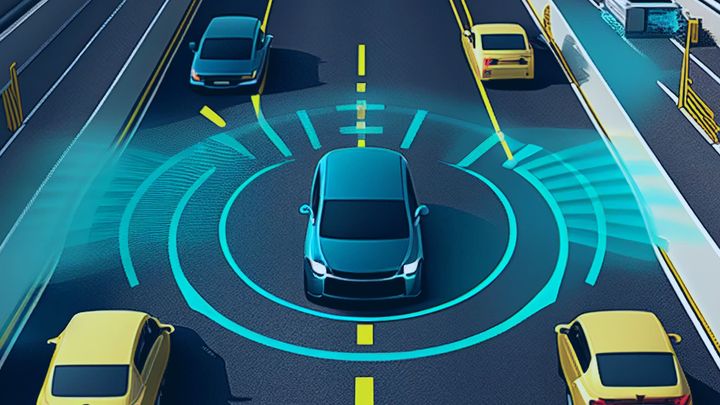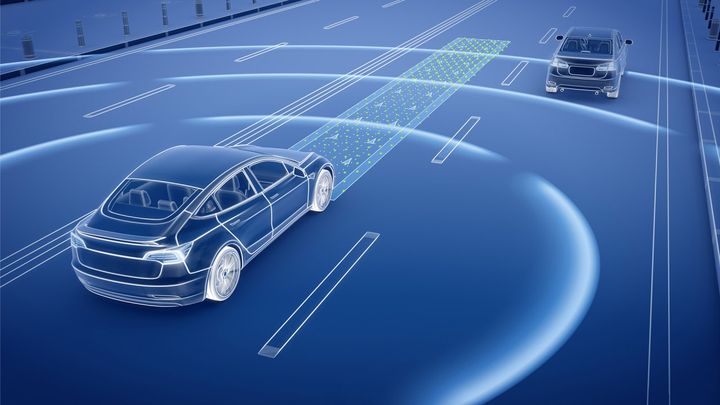


Advanced Driver Assistance Systems (ADAS) have revolutionized the automotive industry by integrating sophisticated technologies into vehicles to enhance driver safety and comfort. These systems utilize a combination of sensors, cameras, radar, and software to perceive the environment around the vehicle and assist the driver in various driving tasks. One crucial aspect of ADAS is its integration with the vehicle's braking system, which enables features such as Autonomous Emergency Braking (AEB), Adaptive Cruise Control (ACC), and Electronic Stability Control (ESC).
In this comprehensive article, we will delve into the key components and technologies of ADAS, explore the major ADAS features and their functions, discuss the benefits and challenges of ADAS and brake integration, and look at future developments and trends in this field. We will also examine consumer acceptance and adoption of these technologies.

Advanced Driver Assistance Systems (ADAS) are a set of technologies designed to assist drivers in various driving tasks, enhance safety, and improve overall driving comfort. These systems rely on a complex network of sensors, cameras, radar, and software algorithms to gather data about the vehicle's surroundings and provide real-time assistance to the driver. ADAS has become increasingly important in modern vehicles as they help reduce the risk of accidents, mitigate the severity of collisions, and provide a more comfortable driving experience.
The integration of ADAS with a vehicle's braking system is a critical aspect of these technologies. By seamlessly working together, ADAS and the braking system can respond quickly and effectively to potential hazards on the road, ultimately saving lives and reducing the number of accidents.

ADAS relies on a variety of components and technologies to function effectively. These include:
Sensors are the eyes and ears of ADAS, gathering data about the vehicle's surroundings. The three main types of sensors used in ADAS are:
| Sensor Type | Description | Advantages | Limitations |
|---|---|---|---|
| Radar | Uses radio waves to detect objects | Works well in various weather conditions | Limited resolution and object classification capabilities |
| Lidar | Uses laser light to create 3D maps | Provides high-resolution data | Affected by weather conditions and high costs |
| Cameras | Capture visual data of the environment | Detects colors, textures, and road markings | Affected by lighting conditions and requires complex image processing |
Sensor fusion combines data from multiple sensors to create a more accurate and comprehensive understanding of the vehicle's surroundings. This process involves:
Data synchronization and alignment
Object detection and classification
Tracking and prediction of object trajectories
Redundancy and error correction
Decision-making algorithms analyze the processed sensor data to determine the appropriate actions for the vehicle to take. These algorithms use techniques such as:
Rule-based systems
Machine learning (e.g., deep learning, reinforcement learning)
Probabilistic models (e.g., Bayesian networks)
Optimization methods (e.g., model predictive control)
ADAS must be seamlessly integrated with the vehicle's braking and steering systems to execute the decisions made by the algorithms effectively. This integration involves:
Actuation of brake and steering systems
Coordination with existing vehicle control systems (e.g., ABS, ESC)
Fail-safe mechanisms and redundancy
Smooth transitions between manual and assisted control

ADAS encompasses a wide range of features designed to assist drivers and enhance safety. Some of the most notable features include:
AEB systems use sensors to monitor the road ahead and automatically apply the brakes when an imminent collision is detected. This feature can help prevent or mitigate the severity of frontal collisions, reducing the risk of injuries and fatalities.
ACC maintains a set speed and adjusts the vehicle's speed to keep a safe distance from the vehicle ahead. When a slower-moving vehicle is detected, ACC can automatically apply the brakes to maintain a safe following distance, ensuring a comfortable and stress-free driving experience.
LKA uses cameras to detect lane markings and helps keep the vehicle centered within the lane. If the vehicle begins to drift out of the lane without the turn signal being activated, LKA can gently steer the vehicle back into the lane, preventing unintentional lane departures.
Other notable ADAS features and their functions include:
| Feature | Function |
|---|---|
| Blind Spot Monitoring (BSM) | Alerts the driver when vehicles are in the blind spot during lane changes |
| Forward Collision Warning (FCW) | Warns the driver of potential frontal collisions |
| Pedestrian Detection | Detects pedestrians in the vehicle's path and alerts the driver or initiates automatic braking |
| Traffic Sign Recognition (TSR) | Recognizes and displays speed limits and other traffic signs to the driver |
| Driver Attention Monitoring (DAM) | Monitors the driver's attention level and alerts them if drowsiness or distraction is detected |
| Intersection Assistance | Helps the driver navigate intersections safely by detecting cross traffic and potential collisions |
| Rear Cross Traffic Alert (RCTA) | Warns the driver of approaching vehicles when reversing out of a parking space |
The integration of ADAS with a vehicle's braking system offers numerous benefits, including:
ADAS features like AEB and FCW can help prevent collisions or reduce their severity by automatically applying the brakes when a potential collision is detected. This can significantly reduce the number of accidents, injuries, and fatalities on the road.
Studies have shown that ADAS technologies can significantly reduce the number of accidents, injuries, and fatalities on the road. For example:
AEB can reduce rear-end collisions by up to 50%
LKA can prevent up to 85% of fatigue-related crashes
BSM can reduce lane-change crashes by 14%
ADAS features like ACC and LKA can reduce driver fatigue and stress, particularly during long trips or in heavy traffic conditions. By assisting with speed control and steering, these features make driving more comfortable and enjoyable.
ADAS technologies can help optimize vehicle performance, leading to improved fuel efficiency and reduced emissions. For example, ACC can smooth out speed fluctuations, reducing fuel consumption and emissions.
As ADAS becomes more widespread, insurance companies are beginning to offer discounts for vehicles equipped with these technologies. Additionally, by reducing the risk of accidents, ADAS can help lower liability risks for drivers and fleet operators.
Despite the numerous benefits of ADAS and brake integration, there are also some challenges and limitations to consider:
Some sensors, particularly lidar and cameras, can be affected by adverse weather conditions such as heavy rain, snow, or fog. This can reduce the effectiveness of ADAS features that rely on these sensors.
Ensuring the reliability and robustness of ADAS algorithms is crucial for the safe and effective operation of these systems. Algorithms must be extensively tested and validated to handle a wide range of driving scenarios and edge cases.
Integrating ADAS with existing vehicle systems, such as the braking and steering systems, can be complex and require close collaboration between automakers and suppliers. Ensuring seamless integration is essential for the proper functioning of ADAS features.
There is a risk that drivers may become over-reliant on ADAS features, leading to complacency and reduced situational awareness. It is important for drivers to understand the limitations of these systems and remain engaged in the driving task.
The cost of ADAS technologies can be a barrier to widespread adoption, particularly in lower-priced vehicle segments. As the technology becomes more prevalent, it is important to ensure that ADAS features are affordable and accessible to a wide range of consumers.
As ADAS technologies continue to evolve, several key developments and trends are shaping the future of this field:
Ongoing research and development efforts are focused on improving the performance, reliability, and cost-effectiveness of sensors used in ADAS. This includes:
Higher-resolution cameras with improved low-light performance
Solid-state lidar with reduced cost and increased durability
High-resolution, multi-channel radar with enhanced object classification capabilities
V2V communication allows vehicles to exchange information about their position, speed, and trajectory, enabling more sophisticated and coordinated ADAS features. This can lead to:
Cooperative adaptive cruise control (CACC)
Platooning of vehicles for improved traffic flow and fuel efficiency
Enhanced collision avoidance through shared situational awareness
V2I communication allows vehicles to exchange information with roadside infrastructure, such as traffic lights, road signs, and weather stations. This can enable:
Intelligent speed adaptation based on real-time traffic and weather conditions
Green light optimization for improved traffic flow and reduced emissions
Real-time updates on road hazards, construction zones, and detours
ADAS technologies form the foundation for the development of fully autonomous vehicles. The Society of Automotive Engineers (SAE) defines six levels of driving automation:
| Level | Description |
|---|---|
| 0 | No automation |
| 1 | Driver assistance (e.g., ACC, LKA) |
| 2 | Partial automation (e.g., Tesla Autopilot) |
| 3 | Conditional automation (e.g., Audi Traffic Jam Pilot) |
| 4 | High automation (e.g., Waymo One) |
| 5 | Full automation (no human intervention required) |
As ADAS technologies advance, they will enable progressively higher levels of automation, ultimately leading to the widespread adoption of fully autonomous vehicles.
The development of clear regulatory and legal frameworks is essential for the safe and responsible deployment of ADAS technologies. This includes:
Safety standards and testing protocols
Liability and insurance policies
Data privacy and security regulations
International harmonization of regulations
The success of ADAS and brake integration ultimately depends on consumer acceptance and adoption of these technologies. Several factors influence this process:
Educating consumers about the benefits of ADAS is crucial for driving adoption. This can be achieved through:
Marketing campaigns highlighting safety and convenience benefits
Hands-on demonstrations and test drives
Clear and concise explanations of ADAS features in vehicle manuals and sales materials
Designing intuitive and user-friendly interfaces for ADAS features is essential for ensuring a positive user experience. This includes:
Clear and timely alerts and notifications
Customizable settings to adapt to individual preferences
Smooth transitions between manual and assisted driving modes
Consistent and predictable system behavior
Building consumer trust and confidence in ADAS technologies is critical for widespread adoption. This can be achieved through:
Transparent communication about system capabilities and limitations
Independent safety assessments and ratings (e.g., Euro NCAP, IIHS)
Real-world demonstrations of system effectiveness
Continuous improvement based on user feedback and field data
Studies have shown that younger generations, particularly millennials and Gen Z, are more receptive to ADAS technologies and are more likely to prioritize these features when purchasing a vehicle. Strategies for increasing adoption among older generations include:
Emphasizing the safety benefits for themselves and their loved ones
Providing clear and accessible training materials
Offering personalized support and assistance during the learning process
Advanced Driver Assistance Systems (ADAS) and their integration with vehicle braking systems represent a significant leap forward in automotive safety and comfort. By leveraging a combination of sensors, data processing, and decision-making algorithms, these technologies can help prevent accidents, reduce the severity of collisions, and enhance the overall driving experience.
As ADAS technologies continue to evolve and become more sophisticated, they will play an increasingly crucial role in shaping the future of transportation. The progression towards fully autonomous vehicles, the integration of V2V and V2I communication, and the development of advanced sensor technologies all promise to revolutionize the way we travel.
However, the success of ADAS and brake integration ultimately depends on consumer acceptance and adoption. By educating consumers about the benefits of these technologies, designing intuitive user interfaces, and building trust and confidence in the systems, automakers and suppliers can help drive widespread adoption and unlock the full potential of ADAS.
As we look to the future, it is clear that ADAS and brake integration will continue to be at the forefront of automotive innovation, paving the way for safer, more comfortable, and more efficient transportation. By embracing these technologies and working to overcome the challenges and limitations they face, we can create a future where accidents are rare, and driving is a more enjoyable and stress-free experience for all.
ADAS use a combination of cameras, radar, LIDAR and other sensors to continuously monitor the vehicle's surroundings. Sophisticated software algorithms analyze this sensor data in real-time to identify potential hazards and either alert the driver or take automated action like emergency braking.
Some of the most prevalent ADAS features in modern vehicles include Forward Collision Warning, Automatic Emergency Braking, Blind Spot Monitoring, Lane Departure Warning, Lane Keeping Assist, Adaptive Cruise Control, Traffic Sign Recognition, and Automated Parking Assist. The specific features and their capabilities vary by vehicle make and model.
Studies have shown that ADAS technologies can significantly reduce the frequency and severity of accidents. For example, the Insurance Institute for Highway Safety estimates that forward collision warning plus autobrake can reduce front-to-rear crashes by 50%.
There is a risk that some drivers may become over-reliant on ADAS and engage in distracting behaviors or fail to remain vigilant. However, it's important to emphasize that ADAS are meant to assist and augment safe driving practices, not replace engaged and responsible driving.
If an ADAS sensor becomes obstructed, damaged or otherwise fails, the feature that relies on it will typically be disabled and the driver alerted. Regular cleaning and maintenance of sensors is important, and any suspected faults should be promptly diagnosed and repaired.
While ADAS are designed and tested for a wide range of common driving scenarios, there may be some complex or unusual situations that challenge their capabilities. Examples could include construction zones with altered lane markings, or extreme weather conditions impacting sensor function.
ADAS are designed to assist human drivers and can automate certain driving tasks under specific conditions. However, the human driver must remain alert and is ultimately responsible for vehicle operation. Fully autonomous vehicles aim to perform all driving functions independently without human involvement.
The cost of ADAS features varies widely depending on the vehicle and the specific features. Some basic ADAS like backup cameras are now standard on most new vehicles, while more advanced sensor suites can add hundreds or thousands of dollars to a vehicle's price.
The cameras and sensors used by ADAS can collect data about a vehicle's surroundings and occupants. There are potential privacy implications depending on how this data is stored, transmitted and used by manufacturers or third parties. Appropriate disclosure and consent policies are important.
Future generations of ADAS are likely to become increasingly sophisticated, with higher-resolution sensors, faster processing, and greater use of AI and machine learning. Improved vehicle-to-vehicle and vehicle-to-infrastructure communication will allow ADAS-equipped vehicles to share data and coordinate their actions for smoother, safer traffic flow.

Miguel started tinkering with car radios as a teenager, fascinated by the intricate dance of wires and circuits. This passion led him to pursue a career as an automotive electrician. For the past 10 years, Miguel has tackled everything from flickering headlights to mysterious electrical gremlins. He thrives on troubleshooting electrical problems and enjoys sharing his knowledge to empower car owners to understand their vehicles better.










